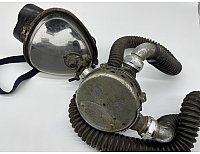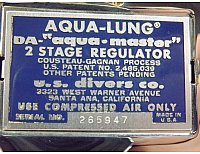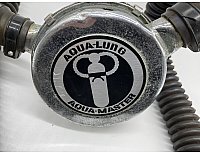CG-45 Military Regulator
US Navy CG-45 Regulator: A Super Rare Find by U.S. Divers
The US Navy CG-45 regulator holds a special place in diving history. By the mid-1940s, Emile Gagnan had immigrated to Canada, where he began working under Canadian Liquid Air Ltd. (CLA), a subsidiary of L’Aire Liquide. Soon after, Gagnan started developing innovative diving equipment, which led to the creation of the CG-45 regulator.
The Birth of Aqua-Lung and CG-45
In 1946, the division of L’Aire Liquide, known as Spirotechnique S.A.R.L., was established to produce and market the CG-45 regulator. However, by 1947, Spirotechnique had restructured to streamline operations, leading to the production of the CG-45 in larger quantities. This regulator was a groundbreaking innovation, particularly because it was reliable and efficient. As a result, it gained popularity both in France and North America.
Transition to the American Market
As interest grew in the United States, there was a need to rename the equipment for better market appeal. Therefore, the term Aqua-Lung was introduced, particularly to capture the growing market in California. Notably, the company understood the importance of marketing and brand appeal, leading to its rapid adoption. Furthermore, Gagnan’s laboratory in Montreal began fulfilling large orders for the Canadian Department of Defense, marking a key moment for North American production.
Expansion and U.S. Divers’ Role
Eventually, in 1951, Rene Bussoz founded U.S. Divers Co., securing exclusive rights to manufacture and distribute the Aqua-Lung in the U.S. However, instead of focusing solely on sales, Bussoz adopted innovative pricing strategies that encouraged resellers to order larger quantities. Consequently, Aqua-Lung equipment became widely available across the United States.
By 1956, the CG-45 regulator had cemented its place as a staple in diving gear, revolutionizing scuba diving technology. Moreover, with the company’s continuous expansion, U.S. Divers became a central figure in the evolution of diving gear.
Follow us













